Live. Magazine
“Being fast and flexible matters most when it comes to drug launches in the biotech space,” says industry veteran Cecile Boisivon, “because pharmaceutical companies need to swiftly adjust to growing demand once a medicine is approved.”
Boisivon, who can look back on nearly 30 years of experience in the biotech industry, and today serves as the head of the Klybeck production site in Basel, puts the need for this flexibility down to the peculiar nature of how biotech drugs are manufactured. During the development phase, when a drug is still being tested in clinical trials, medicines are produced in limited quantity in small-scale facilities. But once a medicine is approved for the market, this type of production is typically transferred to large-scale facilities.
This transfer is not only challenging from a technological point of view. It is also hard in terms of managing production capacity: “First, you cannot easily scale up a process from a small to a bigger facility one to one,” says Boisivon. “Such a transfer,” she explains, “takes months, as specialists need to adapt every step in the complex biological process that hinges on the ability to nurture special cells to produce the biomolecule.”
The production of biotech drugs is done with the help of genetically modified cells, which are grown during a months-long process to produce a medical protein. The process is comparable to brewing or cooking since successful production depends on temperature, oxygen and nutrients.
Depending on the production size, parameters can change, which makes the transfer from small to large facilities generally challenging. It is comparable to trying to extrapolate a cake recipe for four people to a hundred. This often doesn’t work by simply multiplying the ingredients.. “Second,” she says, “you also need to carefully plan in order not to jeopardize overall production capacity. The moment you transfer a production process to another plant, it means that you do not manufacture other products during the transfer period.”
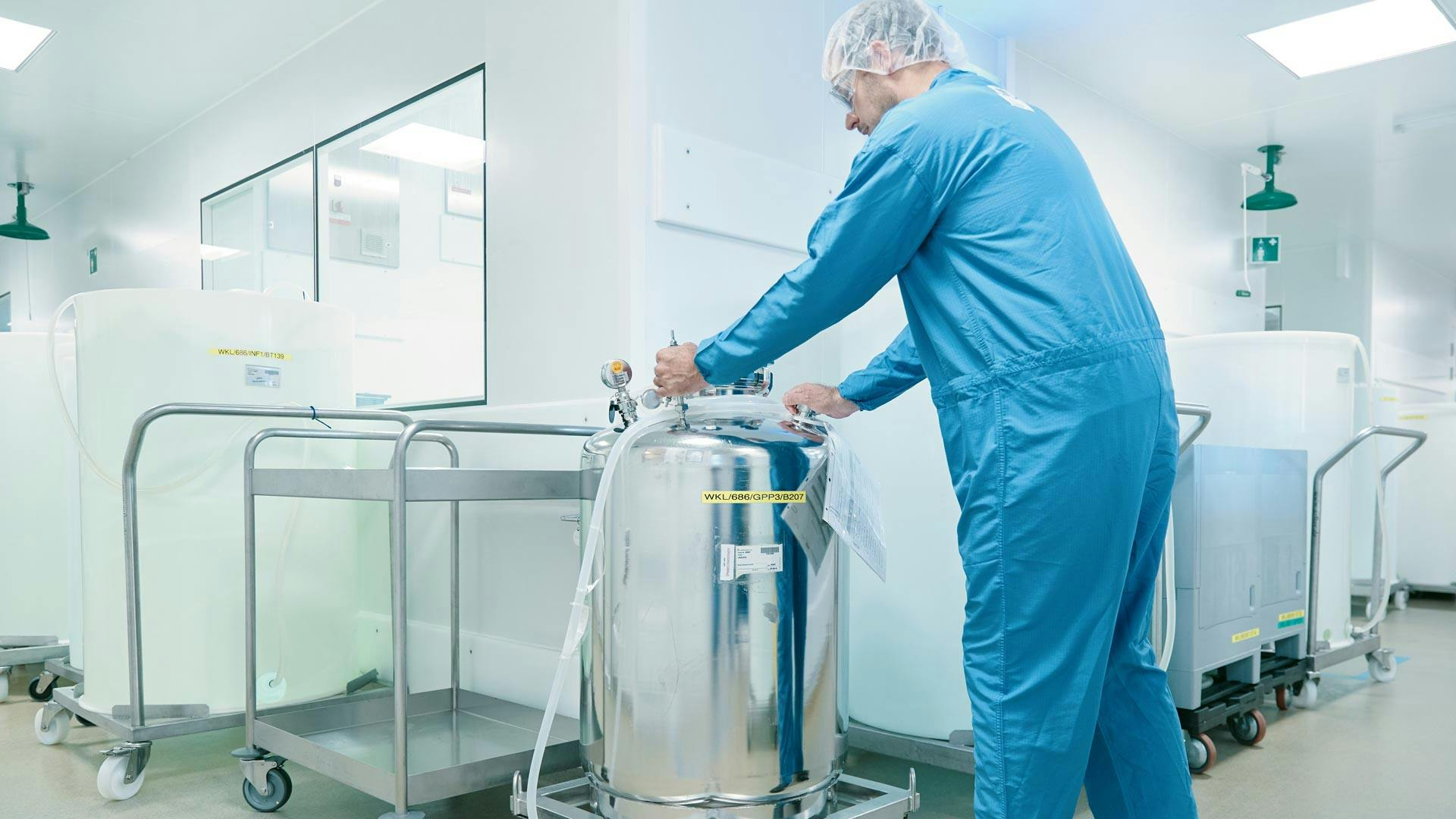
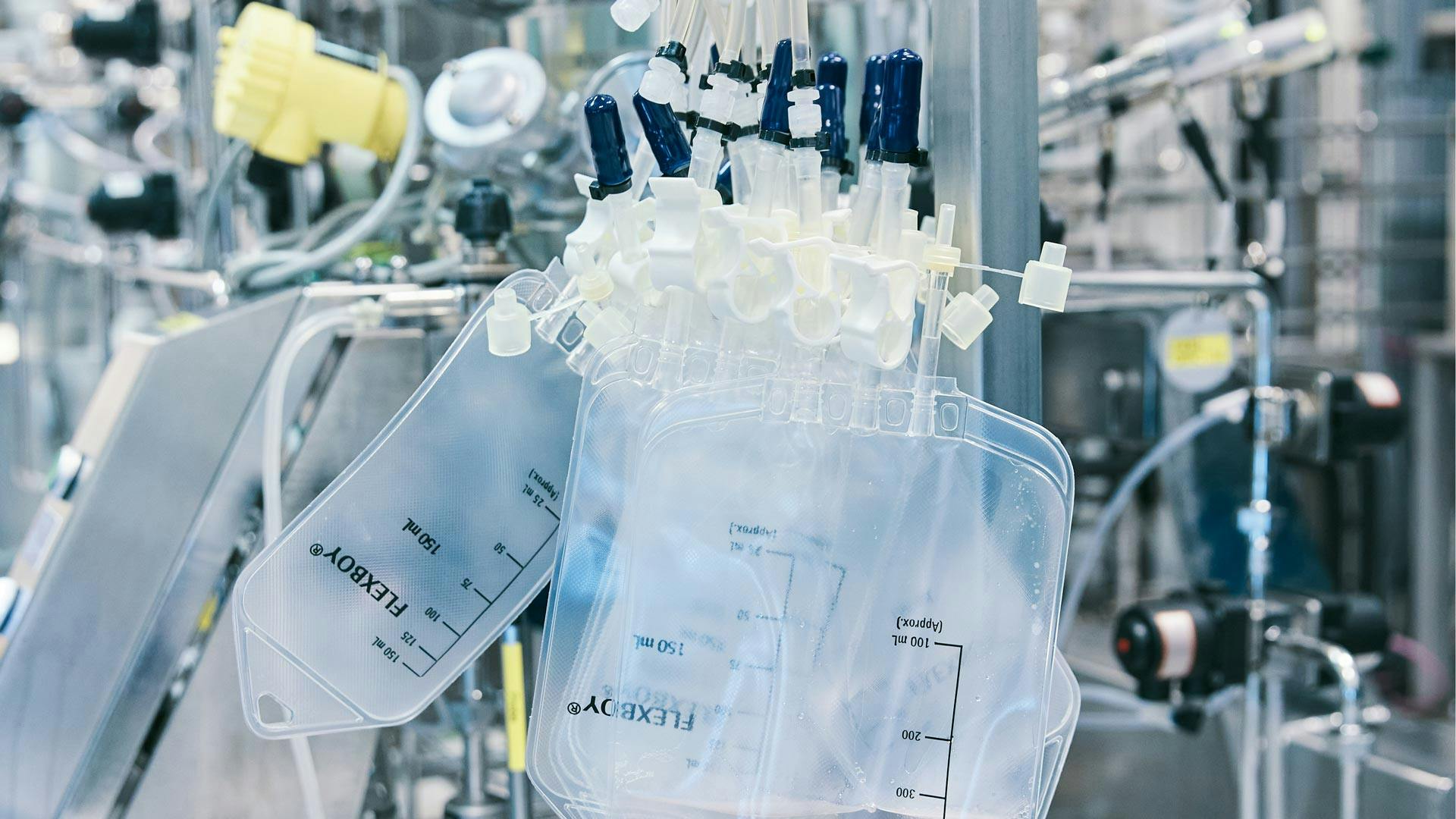
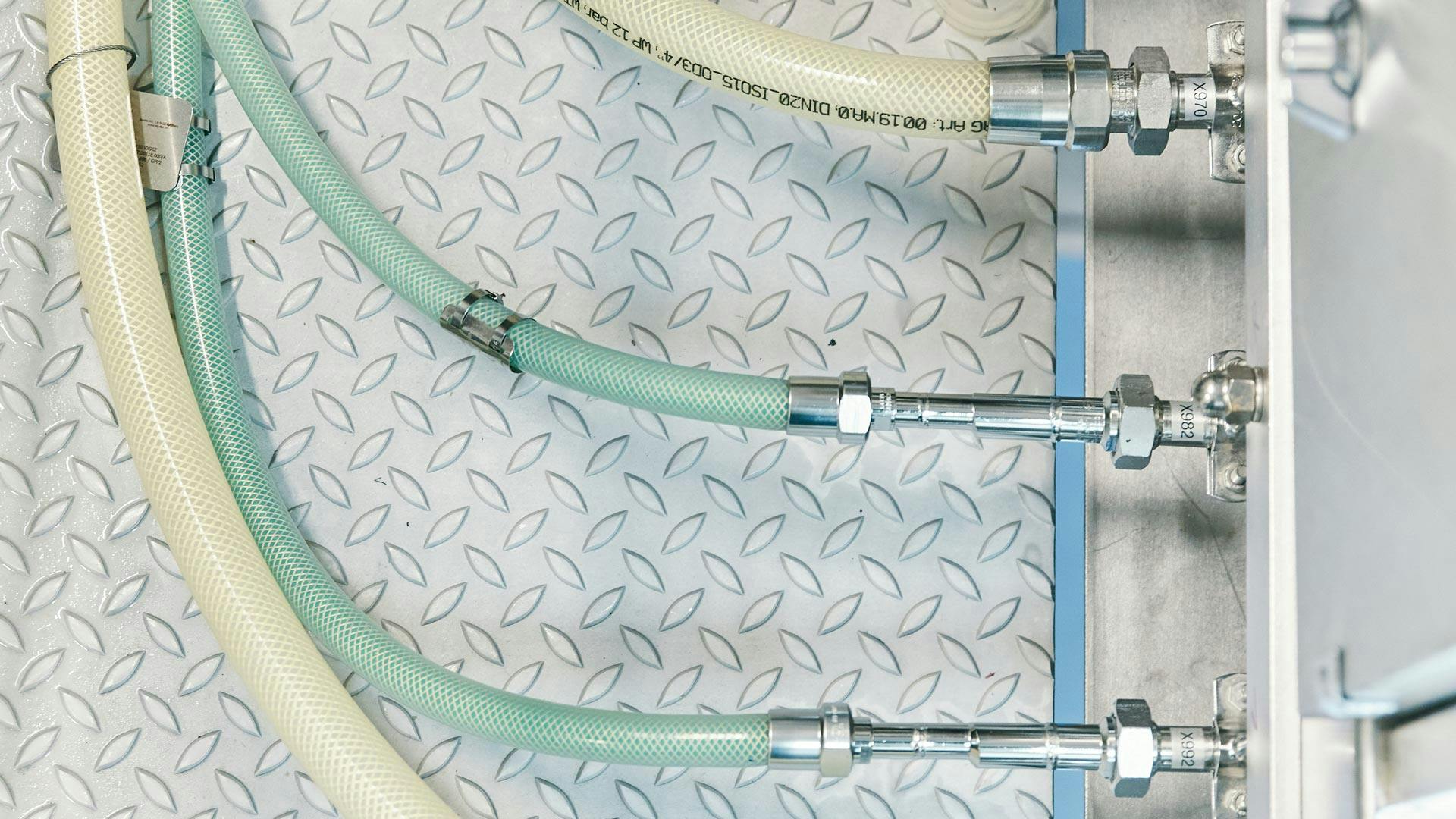
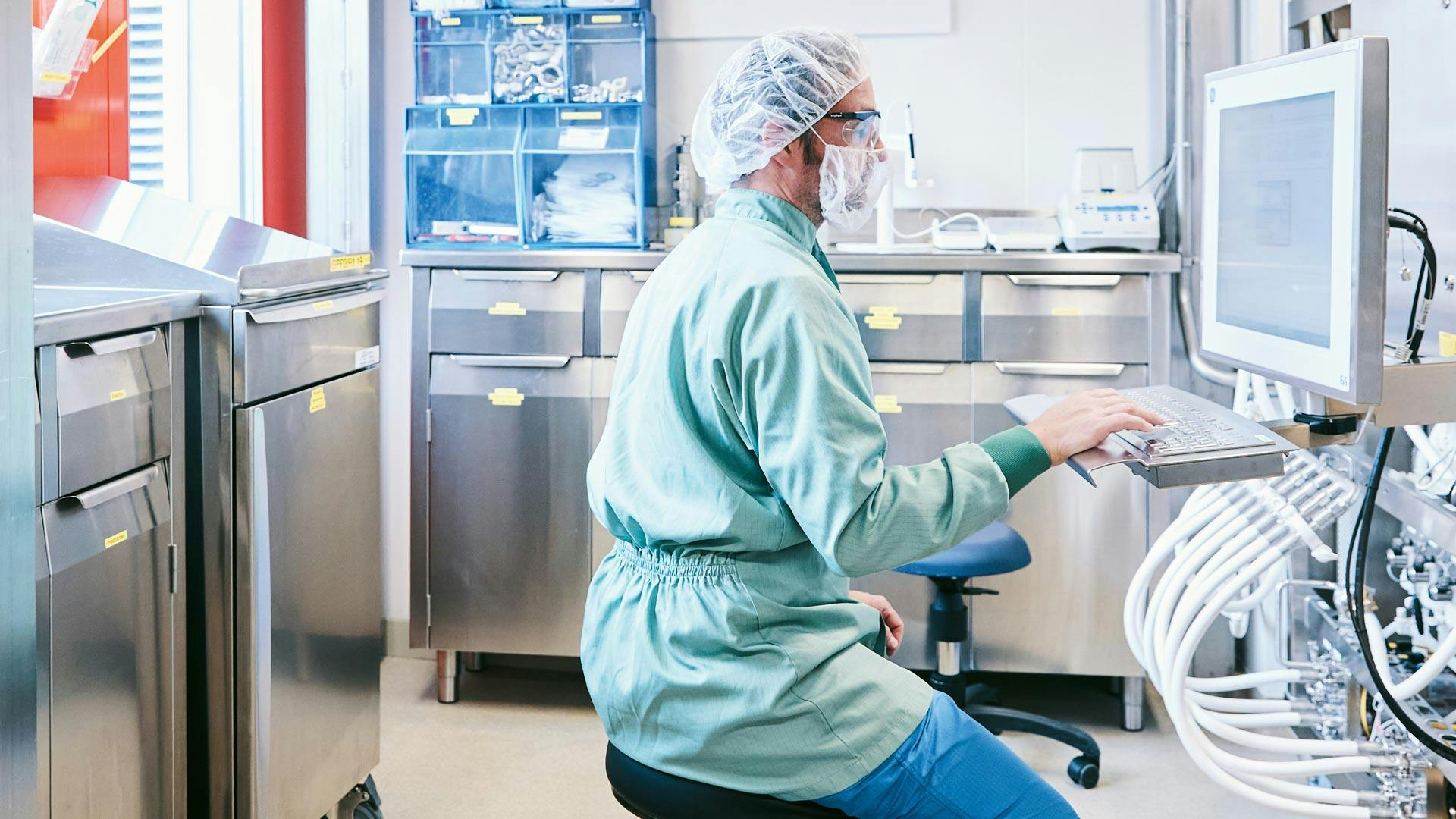
Flexibility is a trademark of the Klybeck facility. The ability to move vessels around ...
... as well as silicon bags ...
... and tubes help the team to adapt quickly to changing production needs.
Moving from one place to another is of paramount importance in the facility. Hence, even the chairs allow team members to swiftly transfer from one station to the next.
To solve these challenges, which are both time- and cost-intensive, the Biologic Drug Substance Supply team under the leadership of Cecile Boisivon, Thomas Meissner and Ulrich Knof proposed a new production concept, which will allow Novartis to use the biotech facility in Klybeck as a launch pad for new biological drugs.
The facility, Boisivon explains, will be able to scale production fast and help large-scale plants to manage their capacity more efficiently. “We can help to meet the demand in the early phase and at the same time support bigger biotech sites in preparing a scale-up.”
A bold idea
The seed for this conceptual innovation was planted several years ago when Novartis decided to transform the facility in Klybeck from a so-called pilot plant, which focuses solely on manufacturing compounds for clinical trials, into a mid-sized commercial plant. The move, which was initiated around 2016/2017, came as a surprise to many. “This idea was considered very bold, to say the least,” remembers Ulrich Knof, who is responsible for process and product transfer-related tasks within the team.
The transformation, obviously, came with a series of challenges. “We needed a full-blown manufacturing setup, which includes complex process steps such as diligent and dedicated quality assurance as well as controls to meet health, safety and environment criteria, among others,” Knof says. For this reason, the plant, which was initially part of the Technical Development & Research function, where early-stage compounds from the discovery labs are manufactured, was moved to the company’s drug production division Novartis Technical Operations.
The functional move was the easy part. The heavy lifting had yet to come: For this the pilot-plant team, which consisted of around 80 associates, needed to hire new staff and upgrade their skill levels. On top of that, the site had to comply with stricter commercial regulations, which required upgrading various procedures and structural elements such as IT infrastructure, validation and cleaning processes.
A flexible facility
The technical adaptation was extremely challenging, since the facility was not only small compared to traditional biotech sites, but needed to be able to adapt to production changes quickly. But within less than three years the team managed to transform the site into a commercial facility, which was approved by the US drug regulator in 2019.
The production process starts with providing the cells with nutrients. After that, the cells are moved from smaller to bigger vessels before the concentration and purification process is initiated.
“What we have created here is a facility in which most parts are flexible, allowing us to adapt production fast,” says Thomas Meissner, who helped transition the site. Meissner, who is responsible for quality assurance, explained that unlike in traditional production units, where installations such as vessels and pipes are fully fixed and part of an automated drug production system, the Klybeck facility stands out for its movable pieces.
Instead of a fully automated system in a huge hall, the different production steps are executed in separate rooms. In a first step, cells are provided with nutrients and then grown in a small vessel that can hold up to 20 liters of material. After that, the cells are moved to bigger vessels of up to 3000 liters before filtration, purification and concentration processes start in other rooms to produce the final product.
Most vessels stand on rollers, while many pipes, which connect the different manufacturing phases, are made from silicon. This allows them to be easily moved and rearranged and provides the team with the possibility not only to produce different medicines in the same facility, but to increase production when needed. “Today we can supply big clinical trials, but at the same time we can also ensure commercial production for a certain period of time,” says Meissner.
Most parts are flexible, allowing the team to adapt production fast.
Next jump
Now the Klybeck team is preparing for the next revolution: expanding the site to support drug launches for the first one to two years while preparing the transfer to a large-scale site.
“When a new biotech drug is launched on the market, you start with relatively low volumes, and then within two or three years, production gets steeper and steeper with the curve looking much like a hockey stick,” Thomas Meissner explains. “With the expansion of our facility, we can produce enough volume for the first few years before production is moved to a larger facility.”
The concept will allow Novartis not only to gain more time before a drug production process is moved to a larger facility. It will also allow it to better understand the manufacturing process, which will make the transfer easier. “I can still remember when we started to produce our first biotech drug here,” says Knof. “While we thought that we could easily replicate the process from the lab in our facility, we ran into a problem that no one had on the radar.”
During the drug production process, Knof says, some of the components suddenly formed into a sort of clump. The team was initially unable to understand why this happened, and it took them several days to analyze the problem before production could resume. “Of course, such things happen in biotech drug production,” Knof says. “In small laboratories, a process can work fine. But if you increase the scale, the process can break down and you need to be inventive.”
Diligent controls are part and parcel of the biotech production process. These are living cells and need to be monitored 24/7.
Knof says that the team has made huge progress over the years when it comes to understanding the intricacies of biotech drug production processes. “Altogether, our team of some 100 associates has more than 2200 years of professional experience. This not only includes commercial drug production, but also the pilot plant development part, which requires more flexibility.”
New chapter
For Boisivon, the facility extension will open a new chapter in the long history of Klybeck’s past, where Novartis experimented with the first biotech drug production processes more than two decades ago. “Biological drugs have been produced here for more than 20 years,” she says. “In many ways, it has been an innovation hotspot. The extension of our plant is sort of a natural next step.”
In future, the site will serve as a bridge between drug development and large-scale drug production and allow Novartis to deepen its expertise in the field, which it started to build in the late 1990s when it launched one of the world’s first biological medicines from Basel.
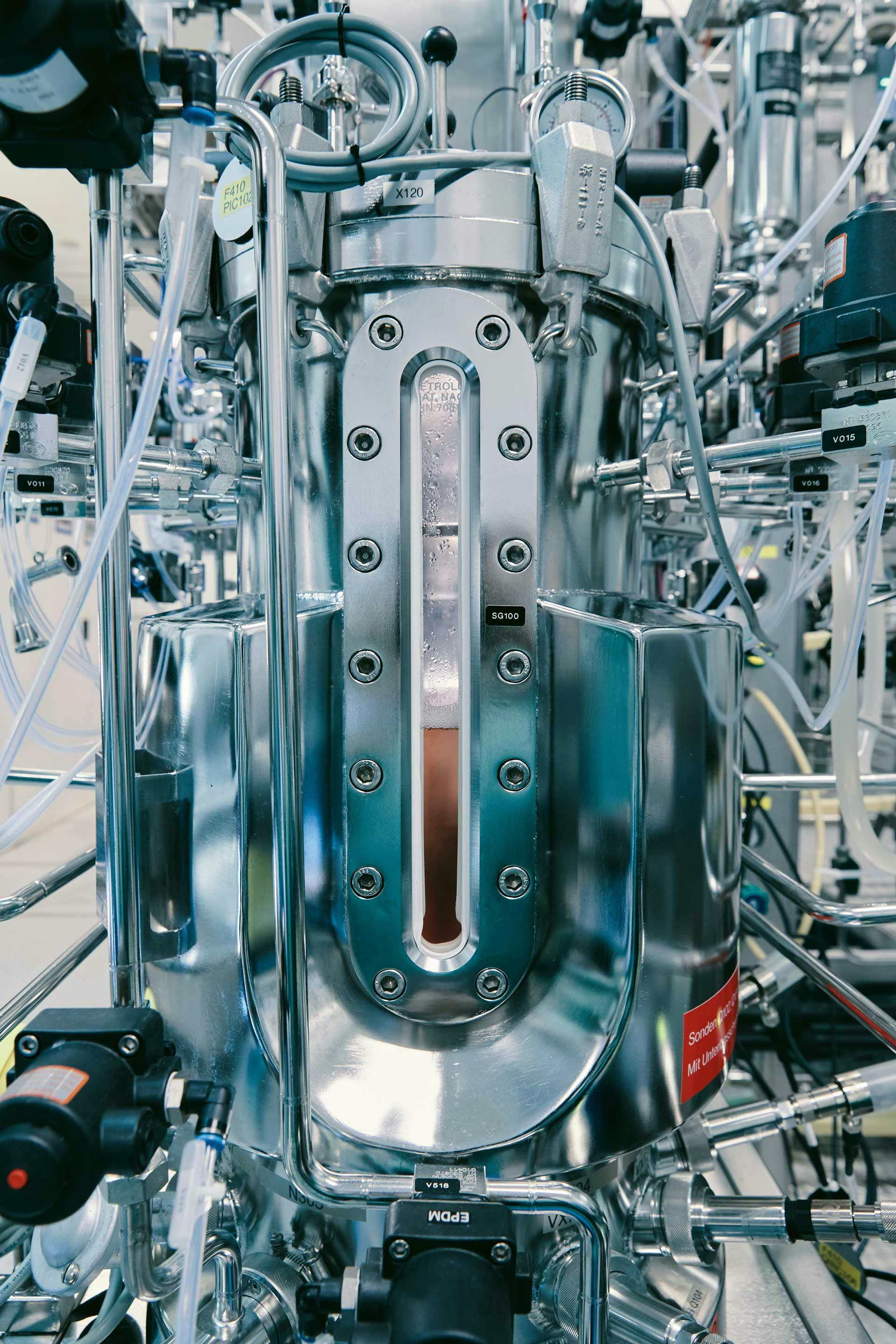
Since this time, Novartis has developed several biological medicines, which are used to treat diseases ranging from cancer to neurodegenerative diseases. Given their ability to reach difficult disease targets, biotech drugs are considered one of the fundamental pillars of the pharmaceutical industry and will remain a mainstay for years to come.
“When we started to work on biotech drugs more than 20 years ago, processes were new and mistakes were not uncommon,” Boisivon remembers. “But all of these mistakes were valuable lessons learned, helping us now to streamline production and, most importantly, to reach patients on time. We will continue this journey.”








